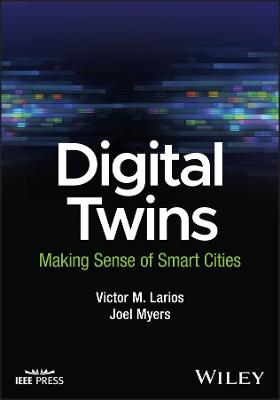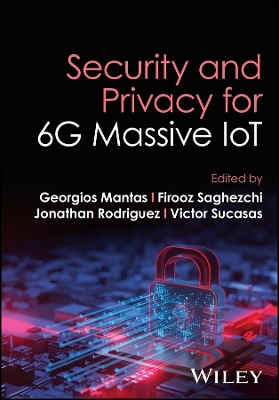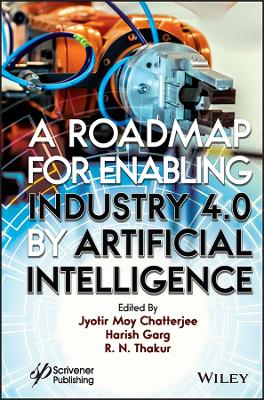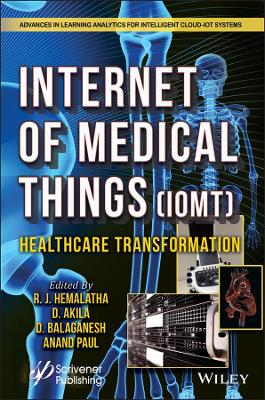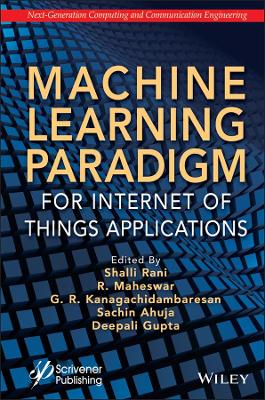Intelligent Systems for Rehabilitation Engineering
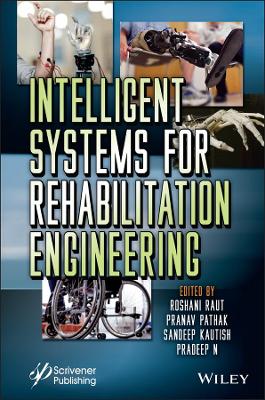 -15%
portes grátis
-15%
portes grátis
Intelligent Systems for Rehabilitation Engineering
Kautish, Sandeep; Raut, Roshani; Pathak, Pranav; N., Pradeep
John Wiley & Sons Inc
04/2022
272
Dura
Inglês
9781119785668
15 a 20 dias
512
1 Different Spheres of Rehabilitation Robotics: A Brief Survey Over the Past Three Decades 1
Saumyadip Hazra, Abhimanyu Kumar, Yashonidhi Srivastava and Souvik Ganguli
1.1 Introduction 1
1.2 An Overview of Robotics for Medical Applications 3
1.2.1 Neurological and Cognitive 3
1.2.2 Stroke Patients 3
1.2.3 Biomechanical or Mechatronic Robotic Systems 4
1.2.4 Human-Machine Interfacing 5
1.2.5 Smart Robotics 5
1.2.6 Control and Stability Analysis of Robotic Systems 7
1.2.7 Assistive Robotic Systems 9
1.2.8 Limb Injury 9
1.2.9 Motion Detection 9
1.3 Discussions and Future Scope of Work 10
1.4 Conclusion 12
References 12
2 Neurorehabilitation Robots Review: Towards a Mechanized Process for Upper Limb 19
Yogini Dilip Borole and Roshani Raut
2.1 Introduction 19
2.2 Recovery and the Robotics 23
2.2.1 Automated Technological Tools Used in Rehabilitation 24
2.2.1.1 Exoskeletal-Type RTT 24
2.2.1.2 End-Effector-Type RTT 25
2.2.2 Benefits of the RTTs 25
2.3 New Directions to Explore and Open Problems: Aims of the Editorial 26
2.3.1 New Directions of Research and Development and First Aim of the Editorial 26
2.3.2 Open Problems and Second Aim of the Editorial 27
2.4 Overview 28
2.5 Renewal Process 29
2.5.1 Renovation Team 30
2.5.2 Renewal Methods and Results 30
2.6 Neurological Rehabilitation 31
2.6.1 Evaluation 31
2.6.2 Treatment Planning 33
2.6.3 Mediation 34
2.6.4 Assessment 34
2.7 State-of-the-Art Healthcare Equipment 35
2.7.1 Neuro Renewal of Upper Limb 35
2.7.1.1 Things and Method 35
2.7.2 Advanced Equipment for Neuro Revival of the Upper Limb 35
2.7.2.1 Methods of Testing 37
2.7.2.2 Renewal Methods and Results 38
2.8 Towards Autonomous Restoration Processes? 39
2.8.1 Default Renewal Cycle 40
2.8.1.1 Computerized Testing Programs 42
2.8.1.2 Choice Support System 43
2.8.1.3 Mechanical Rehabilitation Systems 45
2.9 Conclusion 46
References 47
3 Competent and Affordable Rehabilitation Robots for Nervous System Disorders Powered with Dynamic CNN and HMM 57
Sundaresan Sabapathy, Surendar Maruthu, Suresh Kumar Krishnadhas, Ananth Kumar Tamilarasan and Nishanth Raghavan
3.1 Introduction 58
3.2 Related Works 59
3.2.1 Rehabilitation Robot for Lower Limbs 59
3.2.2 Rehabilitation Using Hip Bot 60
3.2.3 Rehabilitation Wrist Robot Using MRI Compatibility 61
3.2.4 Rehabilitation Robot for Gait Training 62
3.3 Solutions and Methods for the Rehabilitation Process 63
3.3.1 Gait Analysis 63
3.3.2 Methods Based on Deep Learning 64
3.3.3 Use of Convolutional Neural Networks 64
3.4 Proposed System 65
3.4.1 Detection of Motion and Rehabilitation Mechanism 66
3.4.2 Data Collection Using Wearable Sensors 68
3.4.3 Raspberry Pi 68
3.4.4 Pre-Processing of the Data 68
3.5 Analysis of the Data 69
3.5.1 Feature Extraction 69
3.5.2 Machine Learning Approach 70
3.5.3 Remote Rehabilitation Mode 71
3.6 Results and Discussion 72
3.7 Conclusion 90
References 90
4 Smart Sensors for Activity Recognition 95
Rehab A. Rayan, Imran Zafar, Aamna Rafique and Christos Tsagkaris
4.1 Introduction 95
4.2 Wearable Biosensors for Activity Recognition 98
4.3 Smartphones for Activity Recognition 100
4.3.1 Early Analysis Activity Recognition 101
4.3.2 Similar Approaches Activity Recognition 101
4.3.3 Multi-Sensor Approaches Activity Recognition 102
4.3.4 Fitness Systems in Activity Recognition 103
4.3.5 Human-Computer Interaction Processes in Activity Recognition 104
4.3.6 Healthcare Monitoring in Activity Recognition 104
4.4 Machine Learning Techniques 105
4.4.1 Decision Trees Algorithms for Activity Reorganization 106
4.4.2 Adaptive Boost Algorithms for Activity Reorganization 106
4.4.3 Random Forest Algorithms for Activity Reorganization 106
4.4.4 Support Vector Machine (SVM) Algorithms for Activity Reorganization 106
4.5 Other Applications 107
4.6 Limitations 108
4.6.1 Policy Implications and Recommendations 109
4.7 Discussion 109
4.8 Conclusion 110
References 110
5 Use of Assistive Techniques for the Visually Impaired People 115
Anuja Jadhav, Hirkani Padwad, M.B. Chandak and Roshani Raut
5.1 Introduction 115
5.2 Rehabilitation Procedure 117
5.3 Development of Applications for Visually Impaired 121
5.4 Academic Research and Development for Assisting Visually Impaired 123
5.5 Conclusion 125
References 125
6 IoT-Assisted Smart Device for Blind People 129
Roshani Raut, Anuja Jadhav, Swati Jaiswal and Pranav Pathak
6.1 Introduction 129
6.1.1 A Convolutional Neural Network 130
6.1.2 CNN's Operation 131
6.1.3 Recurrent Neural Network 134
6.1.4 Text-to-Speech Conversion 134
6.1.5 Long Short-Term Memory Network 134
6.2 Literature Survey 138
6.3 Smart Stick for Blind People 138
6.3.1 Hardware Requirements 140
6.3.1.1 Ultrasonic Sensor 140
6.3.1.2 IR Sensor 141
6.3.1.3 Image Sensor 141
6.3.1.4 Water Detector 141
6.3.1.5 Global System for Mobile Communication 142
6.3.1.6 Microcontroller Based on the Raspberry Pi 3 142
6.4 System Development Requirements 143
6.4.1 Captioning of Images 143
6.4.2 YOLO (You Only Look Once) Model 143
6.5 Features of the Proposed Smart Stick 145
6.6 Code 146
6.7 Results 147
6.8 Conclusion 147
References 148
7 Accessibility in Disability: Revolutionizing Mobile Technology 151
Nisarg Gandhewar and Senthilkumar Mohan
7.1 Introduction 152
7.2 Existing Accessibility Features for Mobile App and Devices 153
7.2.1 Basic Accessibility Features and Services for Visually Impaired 154
7.2.2 Basic Accessibility Features and Services for Deaf 155
7.2.3 Basic Accessibility Features and Services for Cognitive Disabilities 158
7.2.4 Basic Accessibility Features and Services for Physically Disabled 159
7.3 Services Offered by Wireless Service Provider 160
7.3.1 Digital Libraries for Visual 161
7.3.2 GPS 161
7.3.3 Relay Services 162
7.3.4 Living With Independent 162
7.3.5 Emergency Phone Services 162
7.3.6 Customer Service 162
7.4 Mobile Apps for a Person With Disability 162
7.5 Technology Giants Providing Services 166
7.5.1 Japan: NTT DoCoMo 169
7.6 Challenges and Opportunities for Technology Giants to Provide Product & Service 169
7.6.1 Higher Illiteracy Rate 169
7.6.2 Reach out to Customers With Disabilities 170
7.6.3 Higher Cost of Mobile Phones With Accessibility Features 170
7.6.4 Increasing Percentage of Disability 170
7.6.5 Unavailability of Assistive Technology in Regional Languages 170
7.6.6 Lack of Knowledge Concerning Assistive Solutions 171
7.7 Good Practices for Spreading Awareness 171
7.8 Conclusion 172
References 172
8 Smart Solar Power-Assisted Wheelchairs For the Handicapped 175
Abhinav Bhatnagar, Sidharth Pancholi and Vijay Janyani
8.1 Introduction 176
8.2 Power Source 178
8.2.1 Solar-Powered Wheelchair 179
8.2.2 Solar Energy Module 180
8.3 Smart EMG-Based Wheelchair Control System 182
8.3.1 Techniques of EMG Signal Collection 184
8.3.2 Pre-Possessing and Segmentation of EMG Signal 185
8.3.3 Feature Extraction and Pattern Classification 186
8.3.3.1 Linear Discriminant Analysis (LDA) 188
8.3.3.2 Support Vector Machine (SVM) 188
8.3.3.3 Neural Network (NN) 189
8.3.3.4 Random Forest (RF) 189
8.4 Smart Navigation Assistance 189
8.5 Internet of Things (IoT)-Enabled Monitoring 190
8.6 Future Advancements in Smart Wheelchairs 191
References 192
9 Hand-Talk Assistance: An Application for Hearing and Speech Impaired People 197
Pradnya Borkar, Vijaya Balpande, Ujjwala Aher and Roshani Raut
9.1 Introduction 198
9.1.1 Sign Language 199
9.1.1.1 American Sign Language (ASL) 199
9.1.1.2 Comparison of ASL With Verbal Language 199
9.1.2 Recognition of Hand Gesture 202
9.1.3 Different Techniques for Sign Language Detection 202
9.1.3.1 Glove-Based Systems 202
9.1.3.2 Vision-Based Systems 202
9.2 Related Work 203
9.3 History and Motivation 204
9.4 Types of Sensors 205
9.4.1 Flex Sensor 205
9.4.1.1 Flex Sensor's Specification 205
9.4.1.2 Flex Sensor Types 206
9.5 Working of Glove 213
9.5.1 Hand Gloves 213
9.5.2 Implementation Details at Server Side 214
9.5.2.1 Training Mode 214
9.5.2.2 Detection Mode 215
9.5.2.3 Text to Speech 215
9.6 Architecture 216
9.7 Advantages and Applications 220
References 221
10 The Effective Practice of Assistive Technology to Boom Total Communication Among Children With Hearing Impairment in Inclusive Classroom Settings 223
Fr. Baiju Thomas
10.1 Introduction 224
10.2 Students With Hearing Impairment 225
10.3 The Classifications on Hearing Impairment 226
10.3.1 Conductive Hearing Losses 226
10.3.2 Sensorineural Hearing Losses 227
10.3.3 Central Hearing Losses 227
10.3.4 Mixed Hearing Losses 227
10.4 Inclusion of Hearing-Impaired Students in Inclusive Classrooms 229
10.4.1 Assistive Technology 229
10.4.2 Assistive Technology for Hearing Impairments 230
10.4.3 Hearing Technology 231
10.4.4 Assistive Listening Devices 231
10.4.5 Personal Amplification 232
10.4.6 Communication Supports 233
10.5 Total Communication System for Hearing Impairments 233
10.6 Conclusion 236
References 236
Index 239
1 Different Spheres of Rehabilitation Robotics: A Brief Survey Over the Past Three Decades 1
Saumyadip Hazra, Abhimanyu Kumar, Yashonidhi Srivastava and Souvik Ganguli
1.1 Introduction 1
1.2 An Overview of Robotics for Medical Applications 3
1.2.1 Neurological and Cognitive 3
1.2.2 Stroke Patients 3
1.2.3 Biomechanical or Mechatronic Robotic Systems 4
1.2.4 Human-Machine Interfacing 5
1.2.5 Smart Robotics 5
1.2.6 Control and Stability Analysis of Robotic Systems 7
1.2.7 Assistive Robotic Systems 9
1.2.8 Limb Injury 9
1.2.9 Motion Detection 9
1.3 Discussions and Future Scope of Work 10
1.4 Conclusion 12
References 12
2 Neurorehabilitation Robots Review: Towards a Mechanized Process for Upper Limb 19
Yogini Dilip Borole and Roshani Raut
2.1 Introduction 19
2.2 Recovery and the Robotics 23
2.2.1 Automated Technological Tools Used in Rehabilitation 24
2.2.1.1 Exoskeletal-Type RTT 24
2.2.1.2 End-Effector-Type RTT 25
2.2.2 Benefits of the RTTs 25
2.3 New Directions to Explore and Open Problems: Aims of the Editorial 26
2.3.1 New Directions of Research and Development and First Aim of the Editorial 26
2.3.2 Open Problems and Second Aim of the Editorial 27
2.4 Overview 28
2.5 Renewal Process 29
2.5.1 Renovation Team 30
2.5.2 Renewal Methods and Results 30
2.6 Neurological Rehabilitation 31
2.6.1 Evaluation 31
2.6.2 Treatment Planning 33
2.6.3 Mediation 34
2.6.4 Assessment 34
2.7 State-of-the-Art Healthcare Equipment 35
2.7.1 Neuro Renewal of Upper Limb 35
2.7.1.1 Things and Method 35
2.7.2 Advanced Equipment for Neuro Revival of the Upper Limb 35
2.7.2.1 Methods of Testing 37
2.7.2.2 Renewal Methods and Results 38
2.8 Towards Autonomous Restoration Processes? 39
2.8.1 Default Renewal Cycle 40
2.8.1.1 Computerized Testing Programs 42
2.8.1.2 Choice Support System 43
2.8.1.3 Mechanical Rehabilitation Systems 45
2.9 Conclusion 46
References 47
3 Competent and Affordable Rehabilitation Robots for Nervous System Disorders Powered with Dynamic CNN and HMM 57
Sundaresan Sabapathy, Surendar Maruthu, Suresh Kumar Krishnadhas, Ananth Kumar Tamilarasan and Nishanth Raghavan
3.1 Introduction 58
3.2 Related Works 59
3.2.1 Rehabilitation Robot for Lower Limbs 59
3.2.2 Rehabilitation Using Hip Bot 60
3.2.3 Rehabilitation Wrist Robot Using MRI Compatibility 61
3.2.4 Rehabilitation Robot for Gait Training 62
3.3 Solutions and Methods for the Rehabilitation Process 63
3.3.1 Gait Analysis 63
3.3.2 Methods Based on Deep Learning 64
3.3.3 Use of Convolutional Neural Networks 64
3.4 Proposed System 65
3.4.1 Detection of Motion and Rehabilitation Mechanism 66
3.4.2 Data Collection Using Wearable Sensors 68
3.4.3 Raspberry Pi 68
3.4.4 Pre-Processing of the Data 68
3.5 Analysis of the Data 69
3.5.1 Feature Extraction 69
3.5.2 Machine Learning Approach 70
3.5.3 Remote Rehabilitation Mode 71
3.6 Results and Discussion 72
3.7 Conclusion 90
References 90
4 Smart Sensors for Activity Recognition 95
Rehab A. Rayan, Imran Zafar, Aamna Rafique and Christos Tsagkaris
4.1 Introduction 95
4.2 Wearable Biosensors for Activity Recognition 98
4.3 Smartphones for Activity Recognition 100
4.3.1 Early Analysis Activity Recognition 101
4.3.2 Similar Approaches Activity Recognition 101
4.3.3 Multi-Sensor Approaches Activity Recognition 102
4.3.4 Fitness Systems in Activity Recognition 103
4.3.5 Human-Computer Interaction Processes in Activity Recognition 104
4.3.6 Healthcare Monitoring in Activity Recognition 104
4.4 Machine Learning Techniques 105
4.4.1 Decision Trees Algorithms for Activity Reorganization 106
4.4.2 Adaptive Boost Algorithms for Activity Reorganization 106
4.4.3 Random Forest Algorithms for Activity Reorganization 106
4.4.4 Support Vector Machine (SVM) Algorithms for Activity Reorganization 106
4.5 Other Applications 107
4.6 Limitations 108
4.6.1 Policy Implications and Recommendations 109
4.7 Discussion 109
4.8 Conclusion 110
References 110
5 Use of Assistive Techniques for the Visually Impaired People 115
Anuja Jadhav, Hirkani Padwad, M.B. Chandak and Roshani Raut
5.1 Introduction 115
5.2 Rehabilitation Procedure 117
5.3 Development of Applications for Visually Impaired 121
5.4 Academic Research and Development for Assisting Visually Impaired 123
5.5 Conclusion 125
References 125
6 IoT-Assisted Smart Device for Blind People 129
Roshani Raut, Anuja Jadhav, Swati Jaiswal and Pranav Pathak
6.1 Introduction 129
6.1.1 A Convolutional Neural Network 130
6.1.2 CNN's Operation 131
6.1.3 Recurrent Neural Network 134
6.1.4 Text-to-Speech Conversion 134
6.1.5 Long Short-Term Memory Network 134
6.2 Literature Survey 138
6.3 Smart Stick for Blind People 138
6.3.1 Hardware Requirements 140
6.3.1.1 Ultrasonic Sensor 140
6.3.1.2 IR Sensor 141
6.3.1.3 Image Sensor 141
6.3.1.4 Water Detector 141
6.3.1.5 Global System for Mobile Communication 142
6.3.1.6 Microcontroller Based on the Raspberry Pi 3 142
6.4 System Development Requirements 143
6.4.1 Captioning of Images 143
6.4.2 YOLO (You Only Look Once) Model 143
6.5 Features of the Proposed Smart Stick 145
6.6 Code 146
6.7 Results 147
6.8 Conclusion 147
References 148
7 Accessibility in Disability: Revolutionizing Mobile Technology 151
Nisarg Gandhewar and Senthilkumar Mohan
7.1 Introduction 152
7.2 Existing Accessibility Features for Mobile App and Devices 153
7.2.1 Basic Accessibility Features and Services for Visually Impaired 154
7.2.2 Basic Accessibility Features and Services for Deaf 155
7.2.3 Basic Accessibility Features and Services for Cognitive Disabilities 158
7.2.4 Basic Accessibility Features and Services for Physically Disabled 159
7.3 Services Offered by Wireless Service Provider 160
7.3.1 Digital Libraries for Visual 161
7.3.2 GPS 161
7.3.3 Relay Services 162
7.3.4 Living With Independent 162
7.3.5 Emergency Phone Services 162
7.3.6 Customer Service 162
7.4 Mobile Apps for a Person With Disability 162
7.5 Technology Giants Providing Services 166
7.5.1 Japan: NTT DoCoMo 169
7.6 Challenges and Opportunities for Technology Giants to Provide Product & Service 169
7.6.1 Higher Illiteracy Rate 169
7.6.2 Reach out to Customers With Disabilities 170
7.6.3 Higher Cost of Mobile Phones With Accessibility Features 170
7.6.4 Increasing Percentage of Disability 170
7.6.5 Unavailability of Assistive Technology in Regional Languages 170
7.6.6 Lack of Knowledge Concerning Assistive Solutions 171
7.7 Good Practices for Spreading Awareness 171
7.8 Conclusion 172
References 172
8 Smart Solar Power-Assisted Wheelchairs For the Handicapped 175
Abhinav Bhatnagar, Sidharth Pancholi and Vijay Janyani
8.1 Introduction 176
8.2 Power Source 178
8.2.1 Solar-Powered Wheelchair 179
8.2.2 Solar Energy Module 180
8.3 Smart EMG-Based Wheelchair Control System 182
8.3.1 Techniques of EMG Signal Collection 184
8.3.2 Pre-Possessing and Segmentation of EMG Signal 185
8.3.3 Feature Extraction and Pattern Classification 186
8.3.3.1 Linear Discriminant Analysis (LDA) 188
8.3.3.2 Support Vector Machine (SVM) 188
8.3.3.3 Neural Network (NN) 189
8.3.3.4 Random Forest (RF) 189
8.4 Smart Navigation Assistance 189
8.5 Internet of Things (IoT)-Enabled Monitoring 190
8.6 Future Advancements in Smart Wheelchairs 191
References 192
9 Hand-Talk Assistance: An Application for Hearing and Speech Impaired People 197
Pradnya Borkar, Vijaya Balpande, Ujjwala Aher and Roshani Raut
9.1 Introduction 198
9.1.1 Sign Language 199
9.1.1.1 American Sign Language (ASL) 199
9.1.1.2 Comparison of ASL With Verbal Language 199
9.1.2 Recognition of Hand Gesture 202
9.1.3 Different Techniques for Sign Language Detection 202
9.1.3.1 Glove-Based Systems 202
9.1.3.2 Vision-Based Systems 202
9.2 Related Work 203
9.3 History and Motivation 204
9.4 Types of Sensors 205
9.4.1 Flex Sensor 205
9.4.1.1 Flex Sensor's Specification 205
9.4.1.2 Flex Sensor Types 206
9.5 Working of Glove 213
9.5.1 Hand Gloves 213
9.5.2 Implementation Details at Server Side 214
9.5.2.1 Training Mode 214
9.5.2.2 Detection Mode 215
9.5.2.3 Text to Speech 215
9.6 Architecture 216
9.7 Advantages and Applications 220
References 221
10 The Effective Practice of Assistive Technology to Boom Total Communication Among Children With Hearing Impairment in Inclusive Classroom Settings 223
Fr. Baiju Thomas
10.1 Introduction 224
10.2 Students With Hearing Impairment 225
10.3 The Classifications on Hearing Impairment 226
10.3.1 Conductive Hearing Losses 226
10.3.2 Sensorineural Hearing Losses 227
10.3.3 Central Hearing Losses 227
10.3.4 Mixed Hearing Losses 227
10.4 Inclusion of Hearing-Impaired Students in Inclusive Classrooms 229
10.4.1 Assistive Technology 229
10.4.2 Assistive Technology for Hearing Impairments 230
10.4.3 Hearing Technology 231
10.4.4 Assistive Listening Devices 231
10.4.5 Personal Amplification 232
10.4.6 Communication Supports 233
10.5 Total Communication System for Hearing Impairments 233
10.6 Conclusion 236
References 236
Index 239

